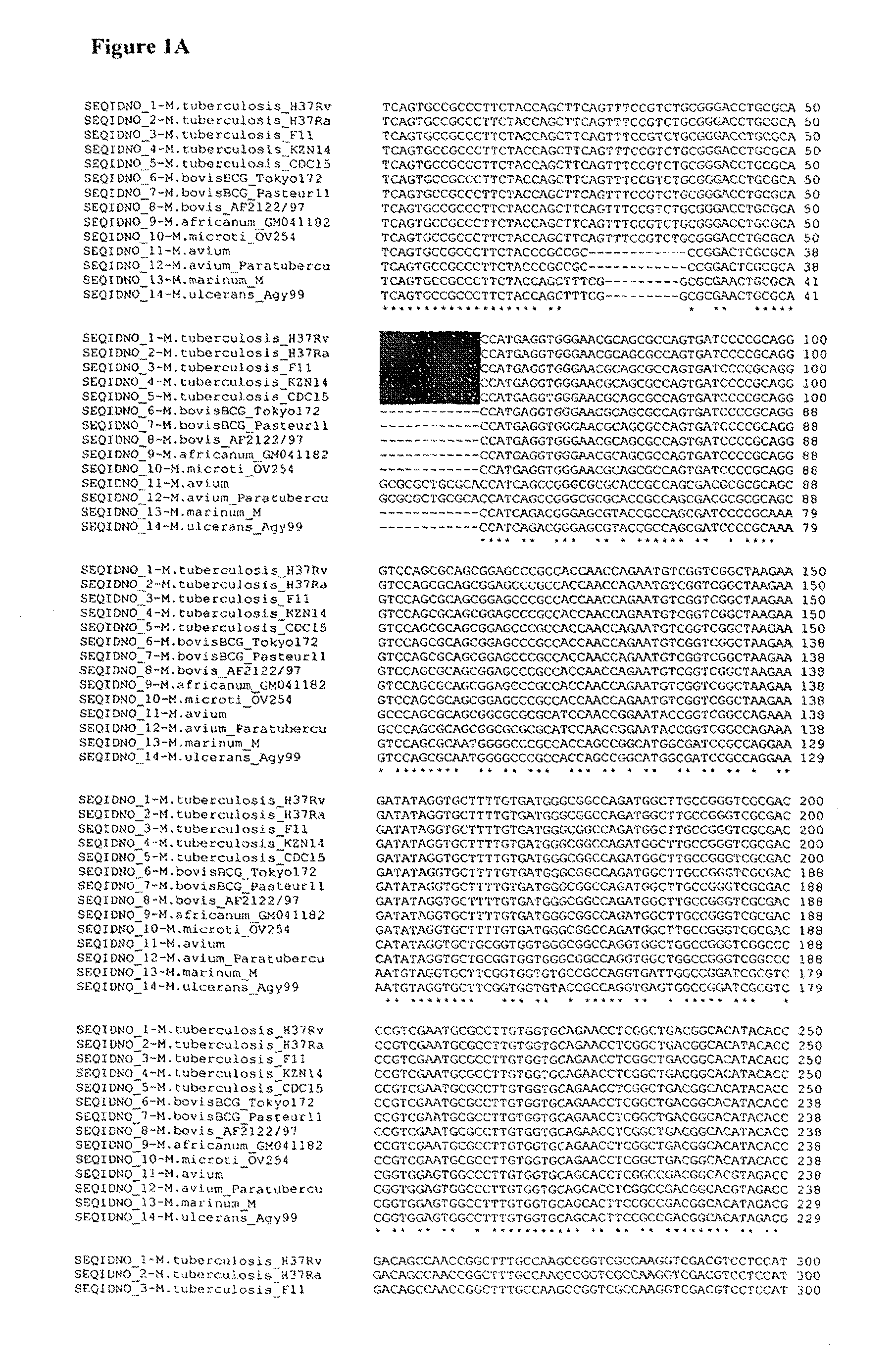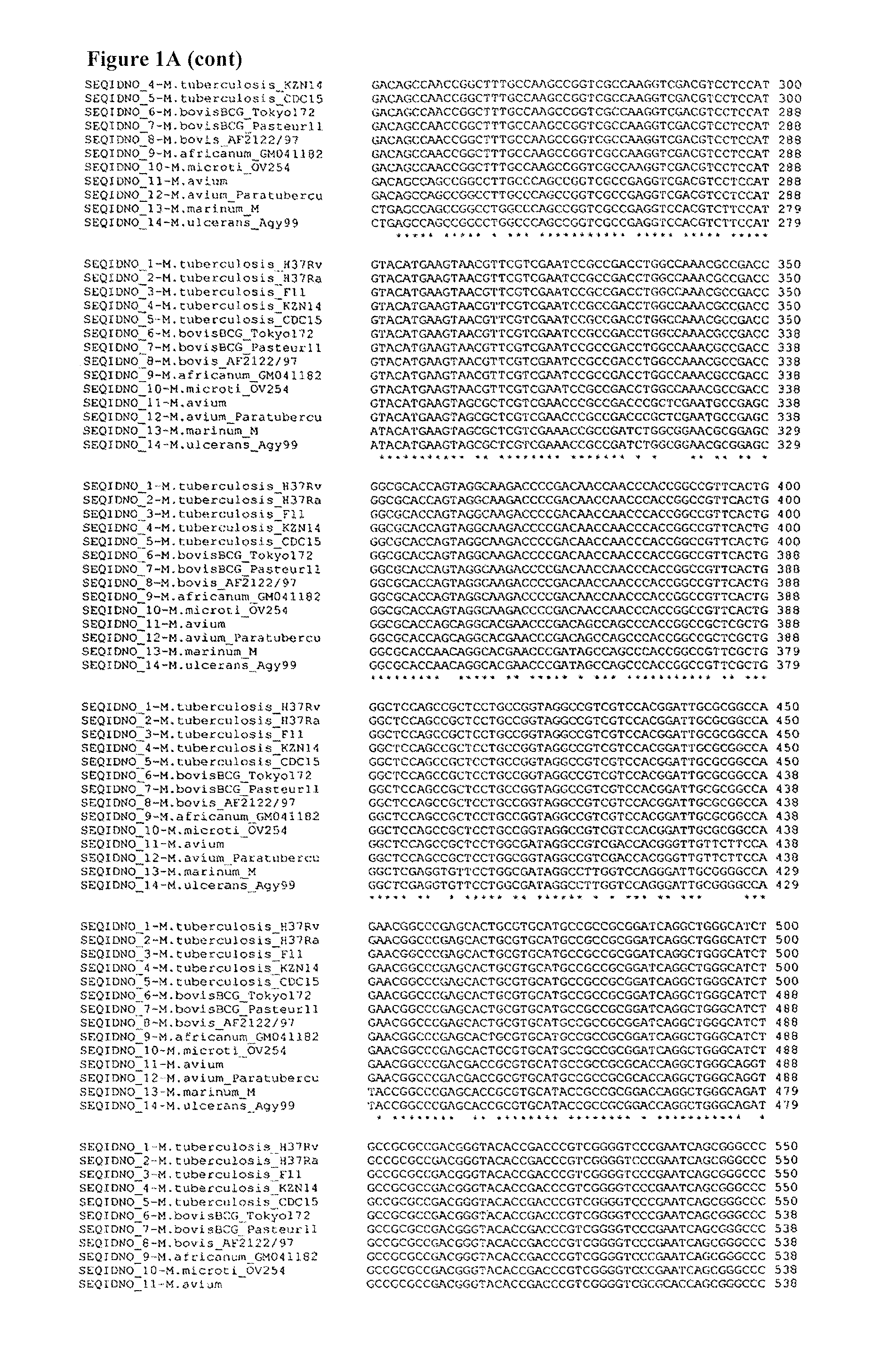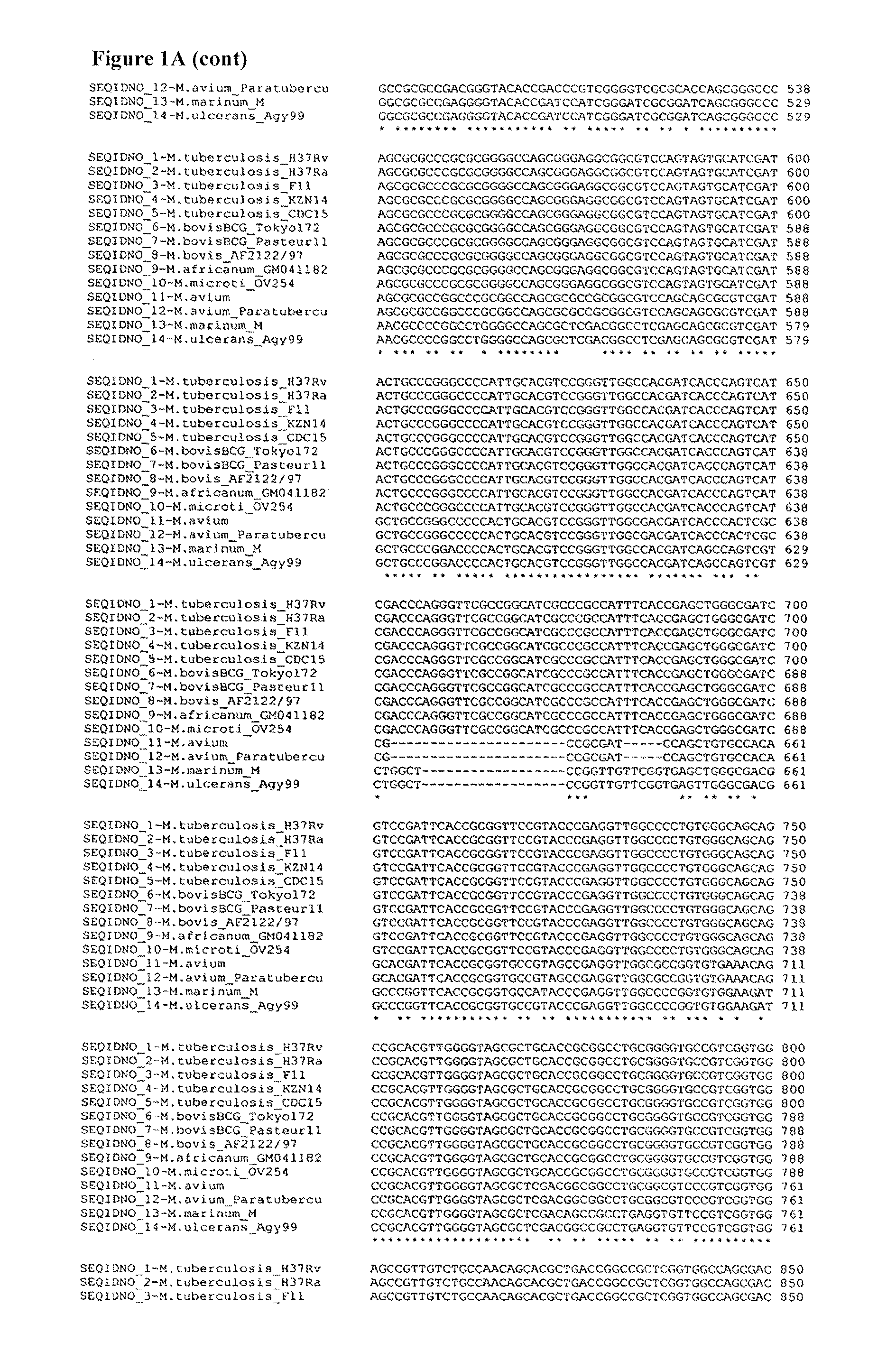Diagnostic method
a technology of diagnostic method and method, applied in the field of diagnostic method, can solve the problems of not routinely performing the differentiation of mtc members to the species level, difficult discrimination of species, and no real-time pcr test which can diagnos
- Summary
- Abstract
- Description
- Claims
- Application Information
AI Technical Summary
Benefits of technology
Problems solved by technology
Method used
Image
Examples
example 1
Diagnostics Target Identification
[0238]A number of approaches were used to search for and identify sequences that would allow the differentiation of the members of the MTC. To identify targets suitable for the detection of M. tuberculosis and other species of the MTC and that are suitable for use in a multiplex in vitro nucleic acid amplification assay, approximately 3000 genes were evaluated in in silico analysis.
[0239]It was necessary to identify genomic regions that are deleted in certain species of the MTC but present in others. Potential target regions were identified using the Mycobacterial Genome Divergence Database (MGDD) (http: / / mirna.jnu.ac.in / mgdd / ), which allowed for identification of insertions, deletions and single nucleotide polymorphisms between M. tuberculosis, M. bovis and M. bovis BCG. Potential target regions were also identified using the web based version of the Artemis comparison tool, WebACT (http: / / www.webact.org / WebACT / home). Sequence information was retrie...
example 2
Assay Design and Development for Multiplex 1
[0257]Nucleotide sequences generated in-house and publicly available sequences from GenBank were aligned for primer and probe design for real-time PCR assays.
[0258]TaqMan probes were designed to be specific for each assay following design guidelines.
MTC Assay—lepA
[0259]For the MTC assay, PCR primers MTC_Fw (SEQ ID NOs: 164) and MTC_Rv (SEQ ID NO: 165), were designed to amplify a 155 bp fragment of the lepA gene for all members of the MTC. The MTC_Fw primer was located at positions 618-634 bp and the MTC_Rv primer located at positions 755-772 bp of the M. tuberculosis H37RV lepA gene.
M. tuberculosis, M. canettii and M. africanum Clade 1 Assay—wbbl1
[0260]For the M. tuberculosis, M. canettii and M. africanum clade 1 assay, wbbl1_Fw (SEQ ID NO: 97) and wbbl1_Rv (SEQ ID NO: 99) were designed to amplify a 146 bp fragment of the wbbl1 gene. The wbbl1_Fw primer was located at positions 16-34 bp and the wbbl1_Rv primer located at positions 141-161 ...
example 3
Internal Control (IAC)
[0271]An internal control was designed and incorporated in both of the multiplex assays. It was designed to monitor for PCR inhibition and PCR efficiency. The lepA gene was chosen as the target for the IAC because enough sequence heterogeneity exists between the M. smegmatis and MTC lepA gene sequences for the design of independent, specific probes. There was also enough homology present, flanking these probe regions, to design one set of primers to amplify both MTC and IAC targets. This resulted in less primer pairs being required in the multiplex PCR reducing assay complexity.
[0272]For the IAC assay, PCR primers, IAC_Fw (SEQ ID NO: 155) and IAC_Rv (SEQ ID NO: 156), were designed to amplify a 157 bp region of the M. smegmatis MSMEG—0660 gene. The IAC_Fw primer was located at positions 497-513 bp and the reverse primer between positions 636-653 bp of the publicly available M. smegmatis_MC2—155 MSMEG—0660 gene.
[0273]Titrations of MTC and IAC DNA were performed t...
PUM
| Property | Measurement | Unit |
|---|---|---|
| isothermal temperature | aaaaa | aaaaa |
| assay time | aaaaa | aaaaa |
| volume | aaaaa | aaaaa |
Abstract
Description
Claims
Application Information
 Login to View More
Login to View More - R&D
- Intellectual Property
- Life Sciences
- Materials
- Tech Scout
- Unparalleled Data Quality
- Higher Quality Content
- 60% Fewer Hallucinations
Browse by: Latest US Patents, China's latest patents, Technical Efficacy Thesaurus, Application Domain, Technology Topic, Popular Technical Reports.
© 2025 PatSnap. All rights reserved.Legal|Privacy policy|Modern Slavery Act Transparency Statement|Sitemap|About US| Contact US: help@patsnap.com



